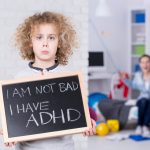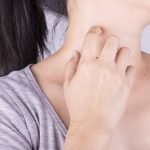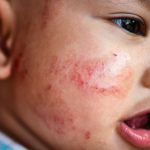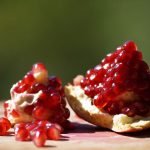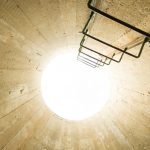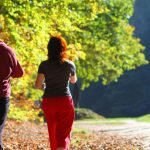Neurotransmitters in Conflict: Under Israel’s Iron Dome
Mark Swanson, ND
At the Cleveland HeartLab’s Symposium – held in Cleveland, Ohio, September 2014 – I had the pleasure of spending time with Dr Decker Weiss, a naturopathic cardiologist who was a featured speaker at the event. His talk was about the link between brain neurotransmitters and cardiometabolic inflammation. He presented some interesting preliminary data from his own patient study linking an ongoing state of neurotransmitter deficiency and imbalance as a cause of systemic inflammation. He made a compelling case for including urinary neurotransmitter testing alongside inflammation testing as part of the patient’s cardiometabolic evaluation for heart attack and stroke risk. This could serve to better identify the causes, guide treatment decisions, and improve outcomes. This led to the continuation of the neurotransmitter-inflammation topic for this interview. What I really wanted to inquire most about too was his recent neurotransmitter study relating to global conflicts, and the who, where, what, and whys behind it. This took him from Arizona, across the globe to London, and then traveling around Israel, meeting some very interesting people while collecting urine samples under the activity of the Iron Dome. I’ll let Dr Weiss take it from here and share his journey of pursuit, passion, and commitment for helping to heal a world in conflict and distress.
Dr Weiss, what is your medical education and current position?
Graduate of Western Illinois University, BS 1987; graduate studies in biochemistry at Grand Canyon University; Southwest College of Naturopathic Medicine, NMD 1997. My cardiology training was at Arizona Heart Institute and the Arizona Heart Hospital. I am a consultant for and serve on the Scientific Advisory Board at Neuroscience, Inc, and Pharmasan Labs; also am adjunct faculty at National College of Naturopathic Medicine in the Masters in Global Health program. I recently left private cardiology practice to become the Director for Center for Health and Medicine, a global affiliate group of Artis Research.
I’ll get this off to a running start by saying you’re not just another commonplace naturopath!
Is there such a thing as a commonplace naturopath? (Ha!) Though I’m foremost an ND, I was also on staff of a conventional hospital for 10 years, and have been practicing as a cardiologist since 2000. A few years ago I sold my practice and took a position with a think-tank research group based in the United States (AZ) and the UK (Oxford). I head up the Center for Health and Medicine for Artis Research.1 We research intractable conflicts worldwide. The great thing about naturopathic medicine is that you can apply the principles to other fields of work. So in essence, I am a Naturopathic Diplomat. I love our profession!
What compelled your transition from a cardiology specialty to pursuing research in Israel under the Iron Dome, collecting urine samples during rocket attacks? Take us on that journey.
Naturopathic doctors are, by our nature, eclectic, and I am no different. I always wanted to work in the field of non-violent conflict resolution, and frankly I was getting older and it was time to make the move. Similar to the day I heard about naturopathic medicine, the stars once again aligned for me. The day I sold my practice, I went to a local biker bar to celebrate. I met a gentleman there named Rich Davis, PhD, from the London School of Economics,2 who was a former White House official in counter-terrorism. He was head of North American operations for Artis Research, a think-tank/research group. The group is a boots-on-the-ground team which conducts studies on intractable conflict.1 Dr Davis was looking to add a new division of health and medicine to the group. So, later that month I met with our European head of its operations, Lord John Alderdice,3 at the House of Lords in London. Lastly, I met up with a third key member, Dr Scott Atran – an anthropologist by training and now a leading expert on “why” terrorism occurs. Turns out, Dr Atran was Dr Margaret Mead’s4 student in anthropology. Overall, I was attracted to the diversity of talent, experience, and drive that these experts brought to the table, but more importantly the “mission.” So, my first meeting in my new profession was at a biker bar… Crazy.
The “mission” being studies on intractable conflict and figuring out the “why,” correct?
Yes. While governments spend billions on the who, what, and where of terrorism and intractable violence, we ask the fourth “W” in why? We felt it was paramount to find out why intractable conflict occurs. What are the psychological, sociological, economical drivers, etc? Our group fights for funds and performs the research to find out a lot more about the “why.”
Exactly how is the “why” researched and performed?
Our group looks to seek out individuality in populations, study them, and learn how to individually and effectively validate and communicate their needs to the appropriate leaders of nations. Our group looks at what Dr Atran calls the “Sacred Values” of each group and person, and how a person can radicalize and become a “Devoted Actor” to their cause.5 On my best days as a practicing doc, I have been doing the same thing on a smaller scale. How did a patient get where they are? What value sets do they have which I can use to motivate them to move towards a healthy lifestyle? Most of all, my patients needed to be looked at as individuals and to have their needs heard and validated. So, the transition to the Artis Research vision was perfect for what I wanted to do. Like I said before, here I’m a Naturopathic Diplomat. Naturopathic first!
What was the study hypothesis? How did you end up in Israel to work on this project?
My plan adopted by our team was to look specifically at the neurotransmitter biochemical individuality of Gazan’s and Israeli’s living and working in border zones of their intractable conflict. The hypothesis of the study was to look at inflammation, oxidation, and neurotransmitter levels of Israelis closest to the war zone, and farthest from the war zone, to see if there was an inverse relationship. I enlisted the Gaza Community Mental Health Program with Director Dr Yasser Jamei6 to test 30 patients in his region, and a clinic outside Gaza in Israeli territory for 30 patients as well. As misfortune would have it, war broke out and Gaza was closed off, so by the time I landed, the study design needed some revision. I was lucky in that our think-tank, Artis Research, is well-connected, so I could pull this off.
My goal now was to sample people close to the front, and geographically sample distal to it to see if there was a geographic difference in war stress on the CNS. I then met with local representatives of LycoRed Bio Ltd, an Israeli-based company that researches and manufactures carotenoids and tomato extracts.7 They agreed to let me sample some of their employee volunteers from their sites in the Yavne and Be’er Sheva areas, which included Soroka Hospital,8 with some staff and a team of research biochemists. I even asked strangers for urine samples. In Tel Aviv, another group of retailers participated. Security police for the buses of school-aged kids going from the front area to Haifa for safety also volunteered. I really wanted to get closer to the front, though. The town of Sderot was only 7 km to the front, so I drove there and asked to see the administrator of a local outpatient medical center for the non-wounded. Sderot is so close to the front, that being within 15-30 seconds of an air-raid siren, a rocket or mortar has the potential to hit. So, half of our meeting was in the bomb shelter! The administrator asked for volunteers, and close to a dozen stepped up. I got it!
What neurotransmitters were tested? Did you also measure inflammation biomarkers?
Serotonin, 5-HIAA, GABA, taurine, glycine, histamine, glutamate, DOPAC [breakdown product of dopamine], dopamine, PEA, tyramine, tryptamine, norepinephrine, and epinephrine. We did not measure inflammation biomarkers in Phase 1, but have separate data making the link a strong one.
Who were the primary sponsors of the study?
This research endeavor became possible with the generous financial support of Seroyal, Inc,9 and the hands-on technical and laboratory testing assistance of NeuroScience, Inc,10 as co-sponsors of this project. LycoRed, Inc, processed and shipped the frozen samples from Israel to the NeuroScience laboratory facility in Wisconsin for neurotransmitter testing.
How did NeuroScience, Seroyal, and NCNM become involved?
I have been consulting with NeuroScience to develop a more in-depth immediate risk assessment, and inflammatory assessment for cardiology. We were looking at cytokines and neurotransmitters for this purpose, especially the role of serotonin in the prevention and treatment of heart disease in women. In Haiti, we used Seroyal’s probiotic, via enema with rehydration, on youth who most likely had cholera. It was a great success. I was very lucky to have the right supplies on me at the time. As a part of Artis Research, we wrote a paper on this, which was published by NDNR in January of this year.
I asked them if they where willing to support the Artis Research Middle East Conflict Study,11 and they did, without any direct positive impact for their organizations. I wanted naturopathic institution involvement too. I was fortunate to be invited by NCNM to become an adjunct faculty member in their Masters in Global Health Program. They all believed in what we are doing and wanted to be part of the network of helping hands giving commitment to solving intractable conflict. For this, I give my heartfelt thanks to each.
Quoting from your blog,11 “Violence is an unnatural state…” and “Violence [and] PTSD are in part an inflammatory, oxidation issue of the central nervous system and brain.” How did you become convinced of that?
What our group found is that violence stems from several factors: First is when people feel threatened or have the perception that they are being threatened. This is as close to natural as violence can get because the needs to protect, find food and safe shelter, as well as procreation, are instinctual. If you look at Nazi Germany, Hitler and his propaganda machine sold the idea that the Jewish people were a threat to Germans’ culture and survival. He gave the German people their ideal scapegoat for the failing economy, and an unthinkable atrocity occurred. People who literally lived in peace as neighbors now had the instinctual drive and political justification for violence. Please understand that what sets off this form of violence is a specific atmosphere of economic, sociological, as well as a pre-set cultural bias. In this atmosphere, people feel threatened and the instincts kick in.
Another type of violence occurs when a group feels that another group violates their sacred values. As a culture becomes denigrated and defamed, a need to protect their “way of life” and honor will kick in and again justify violence. This is clearly evident as we look at the dialogue between the United States and the Islamic Republic of Iran. If we decide to honor the cultural values of the Persian people and truly listen to their needs, the disagreements between our countries will not be that far apart. However, if we violate their cultural norms and slander their religious leaders, we could end up in a potentially horrifying nuclear confrontation. There is a population that just likes to become violent. Most do not start out that way, as many were either abused or indoctrinated from birth, but nonetheless, they simply like violent acts. There is some evidence for this in DNA propensity to violence; however, we have not found a genotype that is born to be violent…
Back to the question at hand, is violence ever a natural event? The answer is still no, because as we looked at data on neurotransmitters, as well as the research I performed in the Middle East, we found that neurotransmitters in people with a history of violence show a distinct pattern of depleted central norepinephrine, increased immune-driven norepinephrine, lower central dopamine, and lower serotonin. This pattern is created by an inflammatory response, leading to oxidation and then neurotransmitter depletion. Over and over, we see the data, and can now recognize the inflammatory and oxidized pattern of the violent individual. Even after the violence or violent period has passed, this pattern still tends to stay ingrained in the individual, leading to a variety of conditions, including depression, anxiety, and panic disorder. This is true even in the persons who “like” violence. So, that is why we can state that while we do have a built-in mechanism for violence, the pattern in violent persons is clearly an unhealthy and unnatural pattern. Violence is a choice, no doubt, but is also a reflection of an inflamed, oxidized, and inflamed body and mind. Dr Scott Atran states that violence is not a “rational act”; now it is up to us, the NDs, to diagnose it and heal it.
Maybe calm and non-oxidized, non-inflamed brains and central nervous systems can break the cycle of violence.
By July 2014, you had all your teams cards in place and put your “ND boots on the ground” in Israel, with a conflict going on and incoming rockets exploding nearby. You were armed with a giant urine collection kit. What was that like personally?
Ha! I sure got some funny looks going door to door asking personal questions and asking for urine. Many were suspicious that I was checking for marijuana use! The tough part was finding bomb shelters or getting out of the car during rocket attacks. There is an app on my phone that would sound along with the air-raid sirens to create an alert, and then I would just follow what others did. When driving, the radio would interrupt with the name of the city (I learned the Israeli towns and regions very fast) along with the siren on my phone. I would then exit the car and lay face down along the side of the road until 5 minutes after the siren on the phone stopped. It was a helpless feeling, but an effective system. Several times while driving, I watched Iron Dome intercept rockets in the distance. It made me feel good that missiles could be used for protection, not destruction. The house I stayed in was courtesy of one of the biochemists who worked for LycoRed. It had a bomb shelter, so I felt safe there.
After the samples were shipped to the US and neurotransmitters were tested, what did the preliminary data find?
Preliminary data did not show a homogeneous pattern, which inversely relates distance to the front to wartime stress. However, the nervous systems of the people closest to the front showed signs of chronic inflammation, low serotonin, and low sympathetic tone (low cerebral norepinephrine), vs those farther away.
What conclusions did this data suggest?
The data suggest that people on the front may have never recovered from the last war. It suggests that we need to bring a different form of medicine into the region to help these people recover from the war, break the cycle of violence, and move on with their lives. From a physician’s standpoint, the current system is not able to provide a model for recovery. In addition, do we honestly think that these people can make rational decisions on war and peace as they move forward? Lastly, the whole State of Israel showed signs of wartime stress, inflammation, and oxidation. It is my hope that by publishing this data, we can create an atmosphere for the people of this area to recover. In the near term, if things go well, our plans are to sample patients in the West Bank and Gaza for an eventual comparison of the data of the 2 countries (if Palestine gets recognized). The idea then will be to bring the healers from both nations to the table, and set an agenda for recovery. Cool stuff!
What was your greatest challenge and reward while spending time inside Israel?
Personally, my greatest challenge was my lack of REM sleep! As I was always in and out of shelters, the most I slept was 90 minutes at any one time. It wore on me. I also put my friends and family through a lot of worry. I did not realize what a burden this could be for them. The most difficult day was getting the samples from Soroka Hospital in Be’er Sheva. I watched the helicopters come in with the incredibly young wounded and dead from the front. I walked by an area where friends and family were waiting for information. The look on their faces was pure fear. I walked out to my car and uncontrollably cried for a while. I am in tears thinking about it as I write this. The reward is simple: the data. The data show clearly that existing models of medicine in these regions are not prepared or trained on how to help their populations and their violent offenders “recover.” After analyzing the data and preparing a paper, my friends in the West Bank, Gaza, and Israel will get the opportunity to use a better model to allow their populations to recover. I am in contact with the former head of Palestinian medicine, Dr Jamei in Gaza, and Israeli officials, about setting up medical centers on both sides of the border to implement this model. It’s time for our profession to research, present, and treat people in these zones, so our race can begin to heal.
“Where Are The Healers? Are We Needed?” is another quote from your blog.11 Dr Weiss, please connect the dots.
The first meetings I had with Artis Research was at our College for the Resolution of Intractable Conflict (CRIC), at Harris-Manchester College, Oxford. Present were representatives from the Islamic Republic of Iran, the Kingdom of Saudi Arabia, the State of Israel, and various academics, economists, government officials along with team members from Artis, military leaders, and economists. But as the meeting progressed, I felt something was missing. It wasn’t a person specifically, but more like a vision or perspective. Than it hit me: Where are the natural healers?
You certainly are one of those natural healers!
Thanks, but I can think of several renowned practitioner healers that could have something very valuable to contribute here. I felt medicine was not being fully represented to include more of a naturopathic concept of the healer. Healers, and the concept of the healer, are in each of the conflict groups’ historical backgrounds, yet in the time of need, they are not invited to the table. The healer mentality is simple: first of all, listen to where each group is coming from; secondly, validate their viewpoints; lastly, work towards the least invasive (complex) and most effective solution. From my viewpoint, intractable violence requires a variety of healers for resolution. I definitely saw flashes and moments of healing ideas, but nowhere near enough to start to solve the intractable issues these people and countries live with. Simply put, it is time for more naturopathic healers to be present at the table when countries are deciding the fate of their people.
Is the study ongoing? Any idea when it might be published?
This is Phase 1 of the study, and should be ready to submit for publishing around January-February, 2015. Phase 2 is in Gaza and the West Bank, possibly Southern Lebanon and Jordan, in summer, 2015.
One last question… Did you collect your own urine for testing when all that Iron Dome rocket intercept stuff was happening?
I did not, but I really thought about it! In the end, it’s about healing nations. I can work on myself when I get home.
[Dr Swanson’s comment]: I think I would have peed my pants instead!
Dr Swanson’s
Closing Comments
This Middle East Conflict study follows others linking brain-body neurotransmitter responses, such as norepinephrine transport, to chronic stress and PTSD.12 Several weakness in this Phase 1 of the study project included the lack of inflammation biomarkers, small sample size, and a non-blinded design. Therefore, the important question remains whether individual neurotransmitter patterns and inflammation biomarkers correlate in the same conflict-region subjects. The study certainly adds to a unique knowledge base for conducting more studies designed to prove whether brain neurotransmitter levels and imbalance cause systemic inflammation. Identifying the gamut of brain neurotransmitter response patterns of people living within regions of war-conflicts ranks high on the list of noteworthy naturopathic endeavors. Dr Weiss, your work is pioneering in this respect. Thank you, again, for sharing your naturopathic “urinary pursuits” for the neurotransmitter solution arm to global health and healing, and your personal reflections from the Ground Zero regions of war and conflict. And let us not forget the thousands of children that are growing up in the midst of all this. Hopefully, your groundbreaking work will make a healthier difference for them too. That would be a pinnacle benchmark for success.
Editor’s note: We invite Dr Weiss to update readers on the progress of his neurotransmitter study project in a future Letter to the Editor.
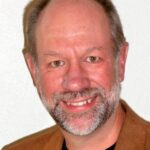 Mark Swanson, ND, writes “The Expert Report” column, which is featured in NDNR. Dr. Swanson has over 25 years experience as chief medical advisor, research and technical consultant, and products formulations expert to leading practitioner brand supplement manufacturers. He is a former associate editor for the American Journal of Naturopathic Medicine, national product director, and published researcher. He is a pioneer graduate of Bastyr University, 1984. Dr. Swanson has his private practice specializing in Preventics Care and Functional Medicine, in Sequim, Washington. Contact: [email protected]
Mark Swanson, ND, writes “The Expert Report” column, which is featured in NDNR. Dr. Swanson has over 25 years experience as chief medical advisor, research and technical consultant, and products formulations expert to leading practitioner brand supplement manufacturers. He is a former associate editor for the American Journal of Naturopathic Medicine, national product director, and published researcher. He is a pioneer graduate of Bastyr University, 1984. Dr. Swanson has his private practice specializing in Preventics Care and Functional Medicine, in Sequim, Washington. Contact: [email protected]
References:
- Artis Research. Center for Health and Medicine. Available at: http://artisresearch.com/center-for-health-and-medicine/. Accessed April 15, 2015.
- The London School of Economics and Political Science. LSE Web site. www.lse.ac.uk/home.aspx. Accessed April 15, 2015.
- Lord Alderice. Parliament.uk Web site. www.parliament.uk/biographies/lords/lord-alderdice/3478. Accessed April 15, 2015.
- Scott Atran. Research and Teaching Interests. University of Michigan Web site. http://sitemaker.umich.edu/satran/home. Accessed April 15, 2015.
- Atran S, Axelrod R. Reframing Sacred Values. Negotiation Journal. 2008;24(3):221-246. Abstract available at: http://tinyurl.com/qg6tgtn. Accessed April 15, 2015.
- Gaza Community Mental Health Programme. http://www.gcmhp.com/en/Default.aspx. Accessed April 15, 2015.
- Lycored. http://www2.lycored.com/. Accessed April 15, 2015.
- Soroka Medical Center. http://hospitals.clalit.co.il/Hospitals/Soroka/en-us/Pages/Home.aspx. Accessed April 15, 2015.
- Seroyal. http://www.seroyal.com/. Accessed April 15, 2015.
- NeuroScience: Assess & Address. https://www.neurorelief.com/index.php?p=home. Accessed April 15, 2015.
- Weiss D. Where are the Healers? Are We Needed? September 23, 2014. [Blog] Available at: http://prezi.com/s_p1pfam0jge/where-are-the-healers-are-we-needed/. Accessed April 15, 2015.
- Pietrzak RH, Gallezot JD, Ding YS, et al. Association of posttraumatic stress disorder with reduced in vivo norepinephrine availability in the locus coeruleus. JAMA Psychiatry. 2013;70(11):1199-1205.




